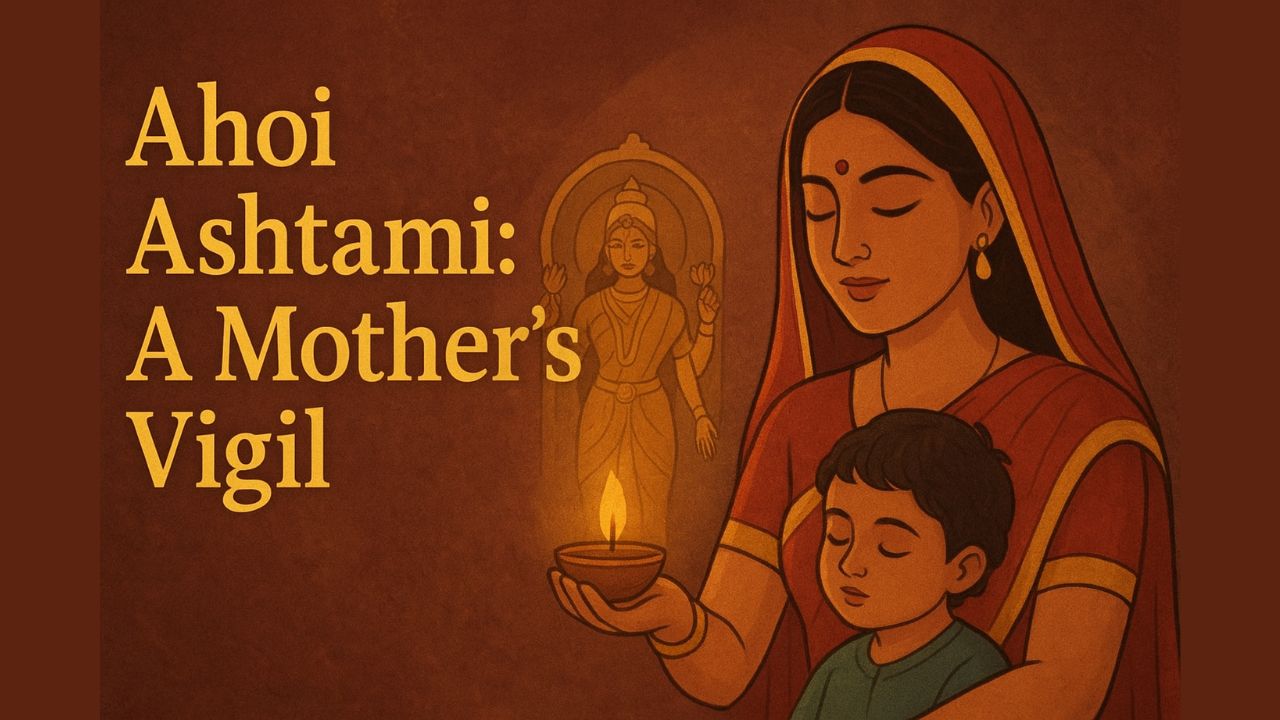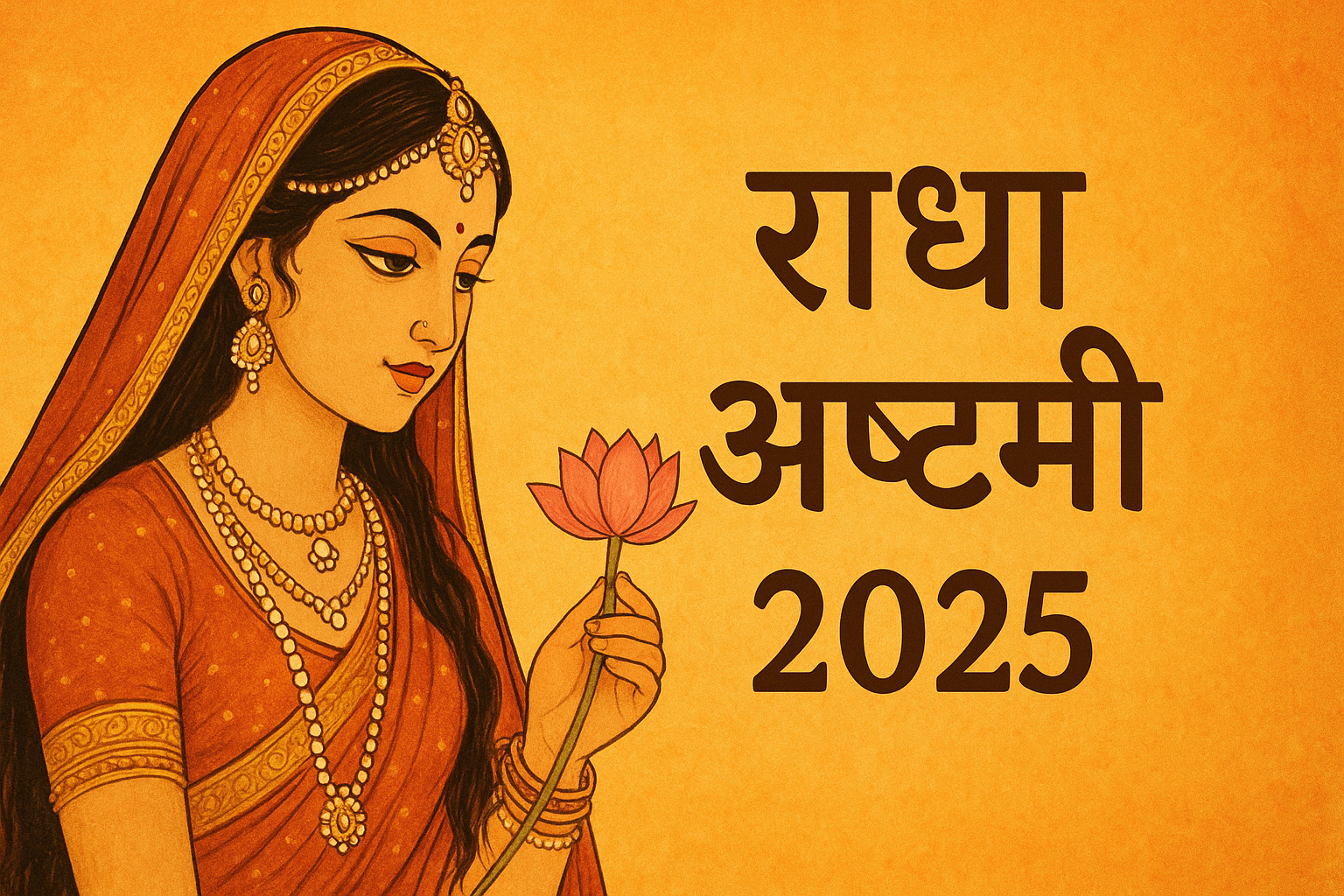
A Fast That Holds a Child’s Life in Its Hands
Ahoi Ashtami is one of those intimate festivals that folds together household ritual, folk story, and the deep anxieties of parenthood. Observed primarily in parts of North India, it’s a day when mothers (and many other caregivers) fast for the well-being and long life of their children, especially their sons. At its heart, the observance is both practical and poetic: practical because it gathers a community to focus on child safety and care; poetic because the ritual is framed as a vow, a vigil, a vow-full conversation between a parent and the fragile future each child represents.
This article walks through the festival’s meanings, the common ritual practices, variations in how it’s observed, and, importantly, ways to bring Ahoi Ashtami into contemporary life without losing what makes it tender and powerful.
The Folk Frame: A Story Repeated in Many Homes
Ahoi Ashtami is sustained by oral tradition. Across villages and towns, you will hear slightly different tellings of the origin story, but the motifs cluster around a few shared elements: a devoted mother, a tragic loss or near-loss of children, a divine or saintly figure who prescribes a vow or fast to avert further harm, and a miraculous restoration or protection that follows faithful observance. In many places, the festival’s goddess or guardian is referred to as Ahoi Mata; in other tellings, the story merges with regional goddesses and domestic deities.
Because these are folk tales passed down through generations, details shift by region and family, names change, minor episodes are added, and the moral emphasis moves slightly from fate to personal vigilance or from prayer to community care. What remains stable is the emotional logic: facing the vulnerability of children, caregivers create a ritual response that gives them agency, an enacted promise that both calms the heart and organizes attention toward a child’s well-being.
When and How It's Observed
Ahoi Ashtami typically falls on the eighth day (Ashtami) of the waning moon (Krishna Paksha) in the Hindu month, when many northern communities mark post-harvest rhythms, an annual moment when household calendars already include ritual housekeeping and social exchange. The precise date varies by lunar calendar, so families follow local panchang (almanac) announcements.
Practically, observance often begins before sunrise. Homes are cleaned and decorated; a simple image or sketch representing Ahoi Mata is drawn on a wall (sometimes a picture of a goddess with children, or local iconography of the guardian), and kheer, jaggery, and fruits are cooked as a gift. Mothers fast during the day, performing small puja (worship) rituals in the evening. In some cultures, the fast is observed until the moonrise or until a certain ritual is finished, while in others, it is broken after seeing the stars or after doing an evening ceremony. Local variations exist in these ceremonial schedules, but they have a consistent emphasis on the well-being of the child.
Ahoi Ashtami 2025: All Details
- Festival Day: Monday, 13 October 2025
- Ashtami Tithi (Krishna Paksha):
- Starts: 13 October 2025 at 12:24 PM
- Ends: 14 October 2025 at 11:09 AM
- Puja Muhurat (Auspicious Time): 6:07 PM – 7:19 PM (approx. 1 hour 12 min)
- Other ranges: 5:40 PM – 6:55 PM, or 5:53 PM – 7:08 PM
- Star/Moon Sighting (to break fast):
- Stars: approx. 6:28 PM
- Moonrise: approx. 12:09 AM on 14 October
Ritual Elements and Their Symbolic Weight
Several ritual elements recur across communities, and each carries symbolic meaning:
The drawing or picture of Ahoi Mata: Usually a hand-painted depiction of a mother goddess or a guardian figure, it serves as the focal point for discussions and vows. Making this image is itself a ritual of attention: sketching invites the family to picture protection, care, and sacred intent.
Fasting: The fast operates on many levels. It is an offering of renunciation (a caregiver voluntarily gives up food to ask for protection), a practice of bodily discipline that sharpens attention, and a public signal to neighbors that this household has undertaken a vow. The fast binds private anxieties to communal recognition.
Offerings (kheer, jaggery, fruit): These are not only traditional foods but also symbols of nourishment. Offering a sweet dish is, in symbolic language, offering a wish for the child’s healthy growth.
Storytelling and recitation: Families repeat the origin tale or sing regional songs about Ahoi Mata. Storytelling transmits moral lessons and keeps caregivers connected to a lineage of practices.
Community sharing: Neighbors and relatives often visit, exchange food, and give blessings, turning a household pledge into a social contract of mutual care.
Regional Variations and Local Color
Like most folk observances, Ahoi Ashtami glows differently in different places. In some Punjabi and Haryanvi communities, the day has elaborate songs and specific rituals; in urban households, the observance may be more private and pared down. In some villages, women gather in the afternoon to share stories, compare remedies for child-rearing, or exchange small gifts for children. Urban adaptations often keep the vows but modernize the foods and bring in pediatric checkups or donation drives as part of the day.
This diversity is a strength: the festival acts as a cultural skeleton that communities can flesh out according to local needs and values.
Who Observes-and Who’s Included?
Traditionally, Ahoi Ashtami is associated with mothers who have young children, especially sons; the fast is a votive act for a child’s long life. But as practice modernizes, the circle of participants widens: fathers increasingly join in, grandmothers who lost children in the past find meaning in the ritual, and families without children observe the day to bless their nieces, nephews, or children of friends.
Inclusive readings of the festival invite single parents, adoptive parents, guardians, and those in non-traditional family structures to use Ahoi Ashtami as a ritual for care rather than a strict gendered obligation.
Modern Reinterpretations - Health, Safety, and Intentional Parenting
The versatility of home celebrations is one of its lovely qualities. Ahoi Ashtami lends itself easily to contemporary reinterpretation without losing its emotional center. Here are ways the festival is being refocused for present needs:
- From wish to practice: Instead of seeing the fast solely as a prayer that a child will live long, many families use the day to undertake concrete safety and health actions: scheduling vaccinations, reviewing childproofing in the home, updating emergency contacts, or booking pediatric checkups.
- Public health tie-ins: Community groups sometimes pair Ahoi Ashtami observances with local health camps, free growth monitoring, nutrition counseling, or vision screening, so the ritual becomes a conduit for practical wellbeing.
- Parenting education: The storytelling sessions that traditionally accompany the day can be repurposed for parenting talks, sharing best practices on nutrition, sleep hygiene, and screen-time limits.
- Emotional rituals: The festival can be an occasion for parents to articulate hopes and boundaries for children, creating gentle, formalized conversations about values and expectations that children can carry into life.
A Festival That Asks Us to Pay Attention
What makes Ahoi Ashtami vital today is not its ancient pedigree, but the way its core logic, vow, attention, community, maps onto modern needs: safety, public health, inclusive parenting, and communal care. If the festival prompts one extra vaccination, one safer corner in a household, or one conversation about equitable caregiving, it has translated its tender mythic power into real, modern good.
Whether you observe the fast as prayer, as a practical day of child-care improvement, or as a quiet moment of familial recommitment, the festival invites a single, crucial practice: to look at the children in our care with deliberate attention, and then to act. That is a vow worth keeping.

